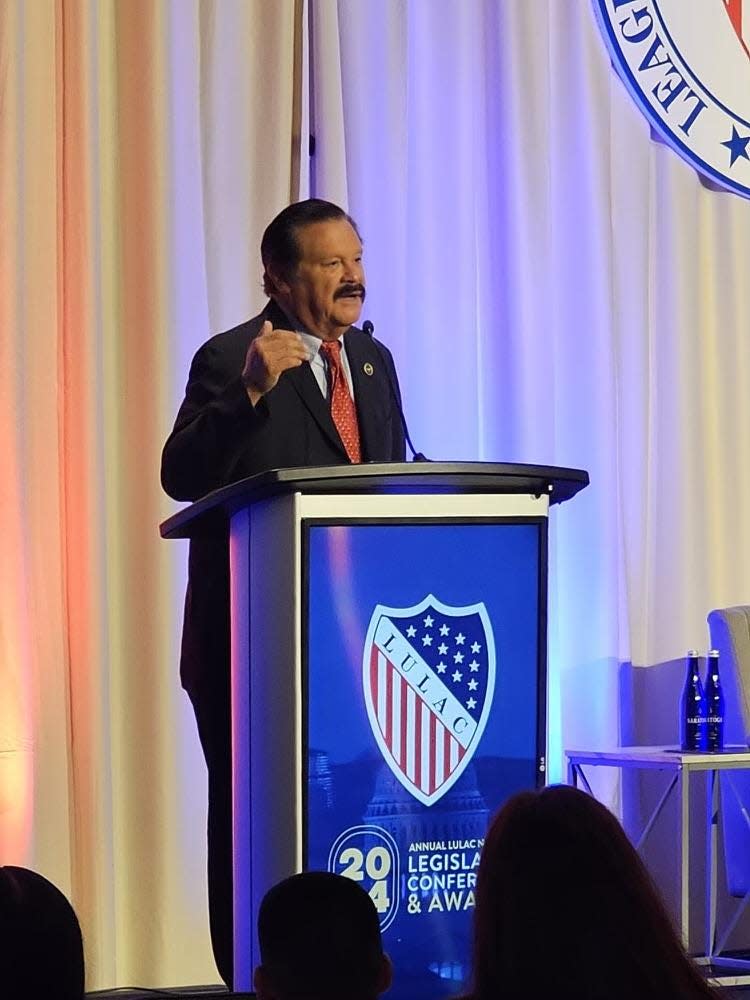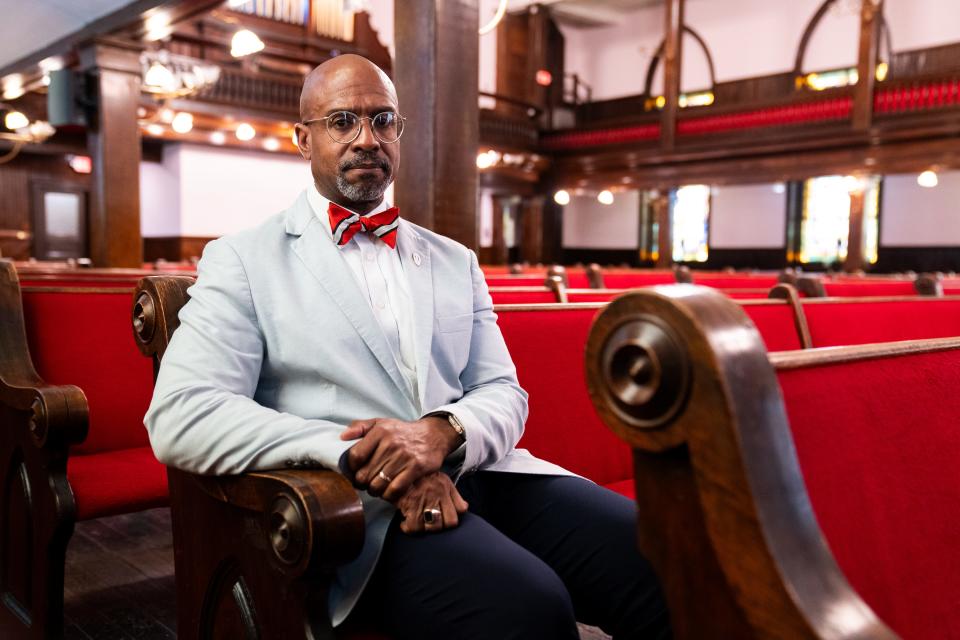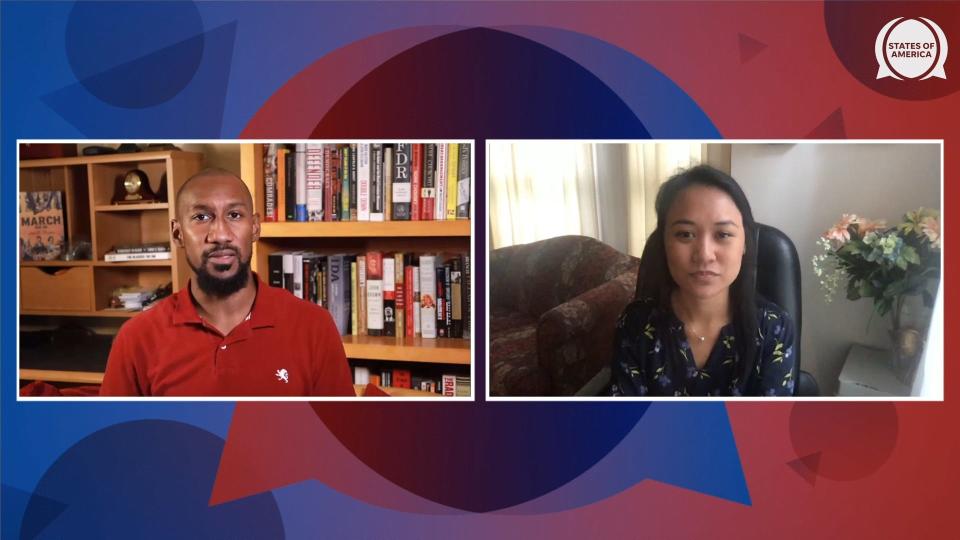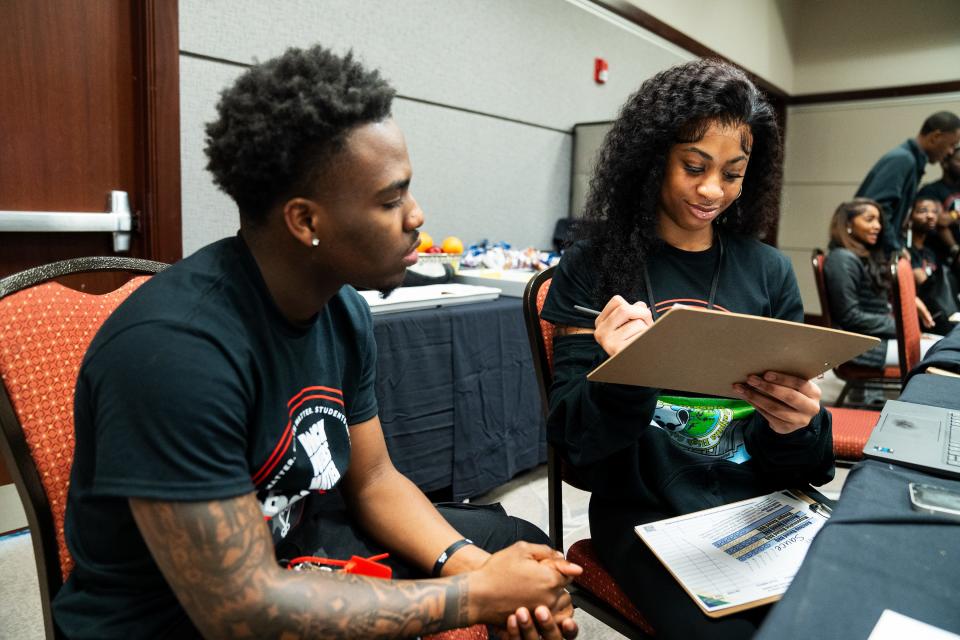Poor voters and voters of color may be key on Super Tuesday. Will 'enthusiasm gap' hurt?
WASHINGTON ? Organizers are banking on hundreds of low-income workers and others showing up with bullhorns and signs in key battleground states Saturday to urge their peers to vote.
At least a dozen states will hold presidential primaries for Super Tuesday, and the Poor People's Campaign wants to ensure voices like theirs are heard then and on Election Day in November.
“We’re going to wake the sleeping giant,’’ said William Barber, national co-chair of the Poor People’s Campaign. “At these rallies poor and low-wage people are going to be the major speakers and calling their peers to action. Then we’re going to go out and do the hard work.’’
Leaders of organizations representing low-income people and others advocating for people of color hope such rallies and other get-out-the vote efforts will help combat what they see as an "enthusiasm gap."
They said a lack of interest in a likely presidential rematch could also affect turnout for local elections, including key congressional races.
Black and Latino voters haven't shown much excitement about giving President Joe Biden a second term in office, said Domingo Garcia, president of the League of United Latin American Citizens, a national civil rights organization. But many, he said, are very concerned about former President Donald Trump returning to the White House.
Tuesday's primaries will be a test, he said. Low voter turnout, particularly in battleground states, could signal where parties, particularly Democrats, are falling short, experts and advocates said.
“It's just kind of a peek at what could happen in November,’’ Garcia said. Low turnout "would mean that the Biden team will have to redouble its efforts on the enthusiasm gap. And then also maybe (that would) leave an opening for the Trump campaign to exploit either through voter suppression or try to get another 5 or 10%" of support from those groups.

To motivate voters, candidates have to talk about pressing issues for people of color, advocates said.
“It's very important that people are aware of what's at stake,’’ Garcia said, "whether it's regarding education, economy, democracy, immigration ? those are all key factors.’’
For Barber, the key issue remains poverty, which he said candidates haven't talked about enough on the campaign trail.
“We really should in this country be talking about the abolition of poverty,’’ he said.
Poor and low-wage people in battleground states, which represent diverse racial and ethnic groups, make up a significant portion – sometimes 30% to 40% ? of the electorate, Barber said. And in other states they make up at least 20%, but many don’t vote.
“The No. 1 reason these voters are not voting is because nobody talks to them,’’ Barber said.

Voters of color could play key role Super Tuesday
With outcomes of some races coming down to narrow margins, even a small turnout of voters of color can determine who wins or loses, said Terry Ao Minnis, vice president of Census and Voting Programs at Asian American Advancing Justice – AAJC, a national civil rights organization.
Minnis noted that Asian Americans make up more than 5% of the electorate in six states participating in Super Tuesday. She also pointed to North Carolina, where she said Asian Americans make up 2.8 % of the electorate, a number larger than the difference in 2020's close presidential race.
States holding primary elections on March 5 are Alabama, Alaska, Arkansas, California, Colorado, Maine, Massachusetts, Minnesota, North Carolina, Oklahoma, Tennessee, Texas, Utah, Vermont and Virginia. One territory, American Samoa, will also hold a primary.
In addition to the presidential primary in those states, Californians will winnow the Democratic field for the Senate and decide on a ballot question about homelessness and mental health, Alabamans will weigh in on a fierce congressional battle and North Carolinians will vote on several statewide positions, among other races.
Both parties have been courting Asian American voters.
“Those all point to voters of color especially playing a key role’’ Tuesday, Minnis said.
Energizing Black voters beyond South Carolina
South Carolina's Democratic and Republican primaries in February were the first 2024 presidential contests in a state with a diverse population. In their get-out-the-vote campaign, Democrats, in particular, targeted African American voters, who have traditionally supported Democratic candidates and were crucial to Biden's 2020 victory.
Civic engagement groups – local and national – also conducted campaigns aimed at urging voters of color to cast ballots. The goal, they said, was well beyond just South Carolina.

“You have the challenge of getting people excited to ensure that they turn out and that they vote,’’ said Eric Manning, pastor of the historic Emanuel AME Church in Charleston, South Carolina. “As we are galvanizing and pushing towards the general election, we then have to make sure that that momentum doesn’t cease, but that we get excited all the way through November.''
The lack of enthusiasm for a Biden bid isn't new, said Cliff Albright, co-founder of Black Voters Matter, which launched its national "We Fight Back'' campaign in South Carolina last month.
"The truth is, Black voters weren't necessarily all that enthusiastic about the Biden run in 2020. What you saw was a very pragmatic response. Black voters said, 'Look, this white guy is our best chance to beat the other white guy,' '' Albright said. "But there wasn't a deep level of like: 'Oh, I'm excited. ... I'm deeply connected to Joe Biden. ' So to a certain extent what people are seeing now isn't really new. It's just being manifested in a different way.''
Young voters 'not happy with their choice'
With Biden and Trump expected to win their party primaries, turnout among voters of color could signal to parties what steps to take as they move toward the fall, said Manuel Pastor, a professor of sociology and American studies and ethnicity at the University of Southern California.
“What matters is what it tells us about the generals,’’ Pastor said.
For example, Pastor said, Democrats will have to shift strategies if voters of color show support for GOP candidates. There are signs Trump is gaining ground among Latino voters, though his support remains flat among Black voters overall, according to recent polls.

Another group to watch is young voters of color, said Pastor, also director of the USC Equity Research Institute. “Young voters are not happy with their choice,’’ he said.
In noncompetitive races, it may be hard to motivate voters of color, who disproportionately are working class and may decide not to take time off from work or other tasks to vote, Pastor said. But in more competitive contests, Tuesday's race may give the parties an opportunity to “test out the machinery’’ for their get-out-the-vote efforts for the fall elections, he said.
Barber said that if 20% – or in some cases as little as 10% ? of poor and low-income infrequent voters are energized to cast ballots, it could tilt an election. “What we found is the lift isn’t that heavy,’’ he said.
In addition to rallies, the Poor People’s Campaign plans to train thousands of people to help mobilize low-income voters through social media and other efforts. The campaign will also tie efforts to key moments in Black history, including the upcoming commemoration of Bloody Sunday, Juneteenth and the 60th anniversary of Freedom Summer.
“We are going all the way in,’’ Barber said, adding that the campaign will also ramp up leading into the political conventions. "We must refuse to be silent anymore with our votes and our voices ... whether Black or white."

Minnis of Advancing Justice – AAJC said she would be disappointed if turnout Tuesday is low, adding that campaigns would have to “double down, triple down’’ to motivate voters of color.
There is still plenty of time between Super Tuesday and the November general election to better educate voters about issues and the importance of voting, said Minnis, who met this week with voting rights activists and civic engagement advocates.
“A lot of people are working hard to make sure voters of color have a voice,” she said. “Regardless of the turnout next week, we have more work to do to make sure our communities are able to vote in November.’’
Contributing: Ken Tran
Follow Deborah Berry on X/Twitter at @dberrygannett
This article originally appeared on USA TODAY: Super Tuesday turnout may show 'enthusiasm gap' among voters of color
